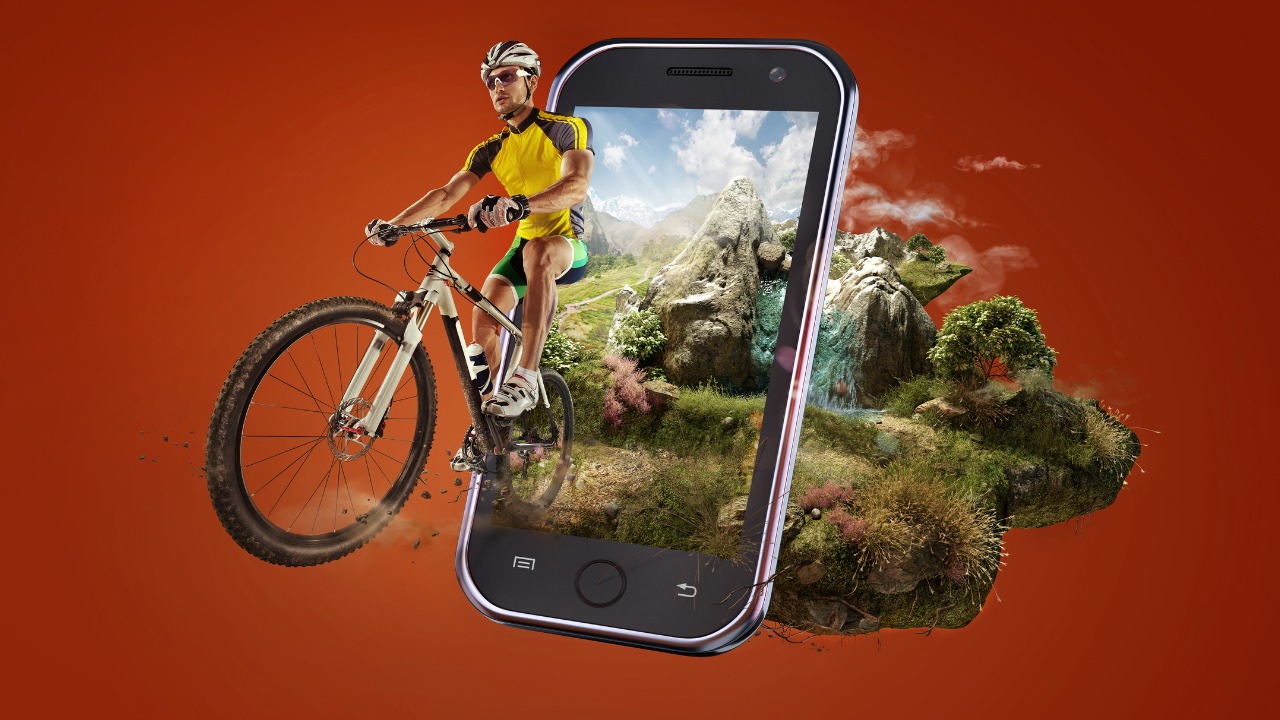Amidst the frenzied pace of the digital era, where the world seems to be in perpetual motion, brands find themselves confronted with a challenging task—capturing the attention of on-the-go consumers.
In this age of mobile dominance, where smartphones have become an extension of our very beings, mobile branding has emerged as a pivotal strategy for businesses aiming to connect with this perpetually connected audience. With each passing day, mobile devices, armed with the power of the internet, infiltrate our lives, enabling us to access information, communicate, and make decisions while on the move.
To harness the potential of this on-the-go consumer segment, brands must devise effective strategies that transcend the traditional boundaries of marketing. This article explores the realm of mobile branding, delving into strategies that enable businesses to reach and resonate with the ever-elusive on-the-go consumers.
Understanding On-the-Go Consumers
To crack the code of mobile branding, it is imperative to comprehend the behavior and preferences of on-the-go consumers. These individuals are constantly in motion, relying on their mobile devices as a gateway to the digital world. Understanding their mindset and adapting branding strategies accordingly can make all the difference in successfully engaging this dynamic audience.
On-the-go consumers are characterized by their inherent need for convenience and instant gratification. They seek information, entertainment, and solutions at their fingertips, often while multitasking or navigating through a bustling urban landscape. They have little patience for sluggish websites, irrelevant content, or inconsistent brand experiences.
For businesses to connect with these elusive consumers, it is crucial to prioritize mobile accessibility and optimize the user experience across devices. By aligning branding efforts with the preferences of on-the-go consumers, businesses can establish a strong foothold in the mobile landscape and capture their attention amidst the chaos.
Moreover, on-the-go consumers are not confined to a specific demographic or geographic location. They span across various age groups, professions, and lifestyles. Thus, brands must adapt their messaging and communication to resonate with the diverse range of on-the-go consumers they aim to reach.
Developing a Mobile Branding Strategy
Creating an effective mobile branding strategy requires a multi-faceted approach that addresses the unique challenges and opportunities presented by the mobile landscape. Let’s explore some key components of a successful mobile branding strategy:
Emphasizing Mobile Responsiveness
One of the foundational elements of mobile branding is ensuring that your website and digital content are optimized for mobile devices. Mobile responsiveness goes beyond mere adaptability to different screen sizes. It involves creating a seamless user experience across devices, ensuring that your brand message is consistently delivered regardless of the device your audience uses to access your content. Implementing responsive web design enables your content to adapt dynamically, ensuring it is easily accessible and visually appealing to on-the-go consumers.
Mobile responsiveness not only enhances user experience but also plays a crucial role in search engine optimization (SEO). Search engines, like Google, prioritize mobile-friendly websites in their search results, making mobile optimization an essential component of your overall branding strategy.
Implementing SEO best practices for mobile optimization includes incorporating mobile-friendly design elements, optimizing page load speed, using appropriate font sizes, and ensuring easy navigation on mobile devices. By prioritizing mobile responsiveness, you create a strong foundation for your mobile branding efforts.
Creating Engaging Mobile Content
On-the-go consumers are constantly seeking engaging and easily consumable content that can be quickly accessed and absorbed. Crafting mobile-friendly content involves distilling your brand message into concise and impactful formats that can capture attention and deliver value within a short span of time.
Consider incorporating visually appealing elements like videos, infographics, and interactive experiences to capture the attention of your mobile audience. Video content, in particular, has gained immense popularity on mobile devices, as it allows for immersive storytelling and delivers information in a visually captivating manner. Infographics are another effective format for presenting complex information in a visually digestible way, making them ideal for mobile consumption.
When creating mobile content, it’s important to keep it concise, visually captivating, and focused on delivering value to the user. The limited screen real estate and the fast-paced nature of on-the-go consumption require you to convey your message efficiently and effectively. By tailoring your content to the mobile environment, you can enhance user engagement and create a memorable brand experience.
Leveraging Social Media for Mobile Branding
Social media platforms have become the virtual hangouts of on-the-go consumers, offering vast opportunities for brands to connect, engage, and build relationships. Establishing a strong social media presence is vital for mobile branding, as it allows you to leverage the power of interactive content, user-generated feedback, and real-time conversations.
When leveraging social media for mobile branding, it’s essential to identify the platforms frequented by your target audience and develop a consistent brand voice across those channels. Each platform has its own unique features and user behaviors, so tailor your content and engagement strategies accordingly.
Mobile users tend to engage more with visual content, such as images and videos, on social media platforms. Therefore, creating visually compelling and shareable content becomes crucial. Additionally, take advantage of the interactive features offered by social media platforms, such as live streaming, polls, and contests, to engage your audience in real-time and foster a sense of community.
Utilizing Mobile Advertising
Mobile advertising serves as an effective tool for reaching on-the-go consumers in their mobile-centric environment. With the prevalence of ad-blocking software and the limited attention span of mobile users, it’s crucial to create compelling and relevant ad experiences that resonate with your target audience.
There are various types of mobile advertising options available, such as mobile display ads, in-app ads, and mobile video ads. When creating mobile ad campaigns, optimize your ad creative for mobile devices, ensuring it is visually appealing, concise, and actionable. Consider leveraging formats like native ads that seamlessly integrate with the user experience, providing value rather than interruption.
Another key aspect of mobile advertising is leveraging targeting capabilities to reach specific segments of on-the-go consumers. Location-based targeting, for example, allows you to serve ads to users in specific geographical areas, enabling you to deliver contextually relevant messages and offers. By monitoring performance metrics and optimizing your mobile advertising campaigns based on data insights, you can ensure that your ads are effectively reaching and engaging your target audience.
Harnessing the Power of Location-Based Marketing
Location-based marketing is a powerful strategy that utilizes the GPS capabilities of mobile devices to target consumers based on their physical location. By delivering relevant and personalized messages to users in specific locations, brands can create highly targeted and contextually relevant mobile experiences.
There are several strategies for harnessing the power of location-based marketing. Geofencing, for instance, involves setting virtual boundaries around specific locations and delivering targeted messages or offers to users who enter or exit those areas. Geotargeted push notifications allow you to send personalized notifications to users based on their location, delivering timely and relevant information. By tapping into location-based technologies, brands can create unique and tailored experiences for on-the-go consumers.
It’s important to strike a balance between personalization and privacy when implementing location-based marketing. Always obtain user consent and prioritize user privacy to build trust and maintain a positive brand image.
Strategies: Utilize geofencing, geotargeted push notifications, and location-based offers to engage with on-the-go consumers in a hyper-localized manner.
Measuring Mobile Branding Success
Tracking and measuring the effectiveness of your mobile branding efforts is crucial for optimizing your strategies and maximizing results. By analyzing key metrics and gaining insights into consumer behavior, you can refine your approach and make data-driven decisions. Here are some essential considerations for measuring mobile branding success:
Key Metrics
Determine the key performance indicators (KPIs) that align with your mobile branding objectives. These may include metrics such as mobile website traffic, conversion rates, app downloads, social media engagement, and customer retention on mobile devices. Monitoring these metrics provides valuable insights into the impact and effectiveness of your mobile branding efforts.
Mobile Analytics Tools
Utilize mobile analytics tools to gather data and analyze user behavior on mobile devices. Tools like Google Analytics and mobile app analytics platforms provide valuable insights into user demographics, engagement patterns, conversion funnels, and user journeys. Leverage these tools to understand how on-the-go consumers interact with your brand on mobile platforms.
A/B Testing
Implement A/B testing to experiment with different elements of your mobile branding strategy. Test variations of mobile ad creatives, landing pages, and call-to-action buttons to identify the most effective approaches. A/B testing helps optimize your mobile branding efforts by making data-backed decisions based on user preferences and behaviors.
User Feedback and Surveys
Solicit user feedback through surveys, ratings, and reviews to gain qualitative insights into the mobile user experience. Understand user satisfaction, pain points, and suggestions for improvement. Incorporate user feedback to enhance your mobile branding strategy and address any usability or experience issues that may arise.
By consistently tracking and evaluating these metrics, leveraging mobile analytics tools, conducting A/B testing, and listening to user feedback, you can measure the success of your mobile branding efforts and refine your strategies to achieve optimal results.
Conclusion
In the ever-evolving landscape of digital marketing, mobile branding has emerged as a critical strategy for businesses aiming to connect with on-the-go consumers. By understanding the behavior and preferences of this dynamic audience, businesses can develop effective mobile branding strategies that resonate with the constantly connected individuals.
Key elements of a successful mobile branding strategy include emphasizing mobile responsiveness, creating engaging mobile content, leveraging social media platforms, utilizing mobile advertising, and harnessing the power of location-based marketing. These strategies enable businesses to capture the attention and loyalty of on-the-go consumers in the fast-paced mobile environment.
However, success in mobile branding is not a one-time achievement. It requires continuous monitoring, measurement, and optimization. By tracking key metrics, utilizing mobile analytics tools, conducting A/B testing, and incorporating user feedback, businesses can refine their mobile branding strategies and stay ahead in this mobile-centric era.
For those seeking expertise in branding and digital marketing can partner with Seattle Advertising. With a proven track record and innovative approach, Seattle Advertising is equipped to help businesses navigate the complexities of mobile branding and reach your target audience effectively.





